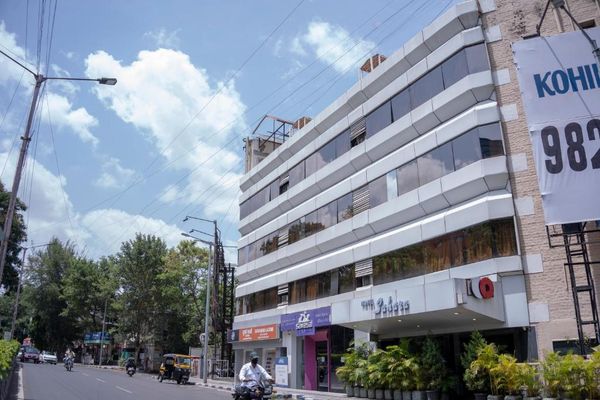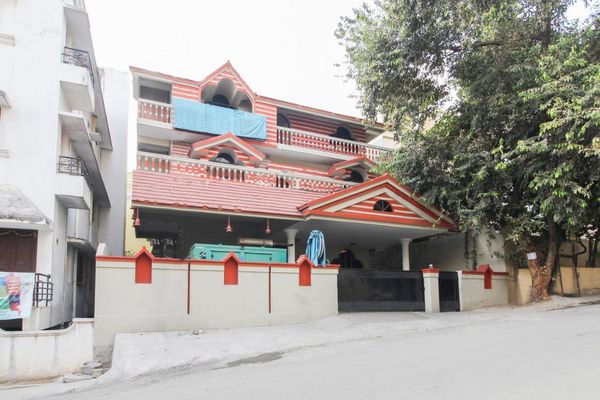Bloom Beyond the Trails: Discover the Magic of the Valley of Flowers Trek
 Palakshi Meharwal
12 May, 2025
11 mins read
57
Palakshi Meharwal
12 May, 2025
11 mins read
57

Nestled in the heart of the Western Himalayas, the Valley of Flowers in Uttarakhand is more than just a trek—it’s a living canvas of color, biodiversity, and myth. For centuries, this UNESCO World Heritage Site has enchanted botanists, photographers, spiritual seekers, and trekkers alike. With each footstep across its alpine meadows, visitors uncover the majesty of nature’s palette and the rich stories that bloom alongside.
What Makes the Valley of Flowers So Special?
Located at an altitude of approximately 12,000 feet above sea level in the Chamoli district of Uttarakhand, the Valley of Flowers is a part of the Nanda Devi Biosphere Reserve. It spans roughly 87 square kilometers, bursting into a vibrant bloom from late June to early September.
Unlike conventional Himalayan treks that are defined by rugged paths and glacial thrills, this trail offers serenity, a sense of reverence, and a walk through one of the world’s rare floral ecosystems. More than 600 species of alpine flowers—many of them endemic—bloom here, creating a kaleidoscope of colors that shift with the seasons.
Historical and Cultural Significance
The valley’s rediscovery in modern times dates back to 1931, when British mountaineer Frank Smythe stumbled upon it while returning from a mountaineering expedition. Captivated, he documented the landscape’s botanical wealth, bringing international attention to the site.
Local folklore adds another layer of intrigue. Many believe the valley was once the sacred garden of Lord Indra. Some even refer to it as a gateway to heaven, owing to its spiritual energy and tranquil beauty. The nearby Hemkund Sahib—a revered Sikh pilgrimage site—attracts thousands each year, further intertwining the trek with spiritual tourism.
When to Visit: Timing Your Trek
Timing is critical for this journey. The best time to visit is between mid-July and mid-August, when the monsoon rains fuel a wild bloom of flowers and the valley turns into a riot of colors. The trail is closed during winter months due to heavy snowfall, and opens around June once the snow begins to melt.
Trekking Route and Itinerary Overview
The Valley of Flowers trek generally begins at Govindghat, a small hamlet near Joshimath. Here's a typical five- to six-day itinerary:
Day 1: Rishikesh to Govindghat (Drive – approx. 270 km)
An early drive along the Alaknanda River through mountain villages leads to Govindghat, a popular base camp for treks in this region.
Day 2: Govindghat to Ghangaria (Trek – 10 km)
The real adventure begins with a steady uphill trek to Ghangaria, a quaint village nestled along the Pushpawati River. Mules and porters are available for those who prefer not to hike.
Day 3: Ghangaria to Valley of Flowers and back (Trek – 8 km)
This day is the heart of the experience. The trail opens into vast meadows carpeted with poppies, marigolds, orchids, and anemones. You’ll spend hours exploring the valley, absorbing its beauty and documenting its fleeting blooms.
Day 4: Ghangaria to Hemkund Sahib and back (Trek – 12 km)
Though optional, many trekkers include a visit to the serene Hemkund Sahib, situated at over 15,000 feet. The glacial lake and the gurudwara offer a peaceful respite and a dose of cultural immersion.
Day 5: Ghangaria to Govindghat (Trek – 10 km)
Descend the trail and drive back toward Rishikesh or Joshimath.
Flora and Fauna: Nature’s Silent Symphony
The star attraction here is undoubtedly the flora. Species such as the Himalayan bellflower, blue poppy (Meconopsis), and cobra lily blanket the valley. Many of these flowers are medicinal, while others are extremely rare.
The valley also hosts a diverse fauna population, though sightings can be elusive. If lucky, trekkers may spot the Himalayan monal (the state bird of Uttarakhand), red foxes, and even traces of the elusive snow leopard.
Trek Difficulty and Physical Preparation
Despite its high altitude, the Valley of Flowers trek is considered moderate in difficulty. It’s ideal for beginners who are willing to acclimatize properly and maintain a decent fitness level. The terrain is well-paved in most sections, and while certain stretches may test your stamina, the visual rewards at every turn are worth the effort.
To prepare:
- Engage in regular cardio activities (like jogging or cycling) at least 4–6 weeks prior.
- Practice short treks on hilly terrain if possible.
- Invest in comfortable trekking shoes with good grip.
Sustainable Travel Tips: Preserving the Valley’s Fragile Ecosystem
Given its protected status and ecological importance, responsible travel is not just encouraged—it’s imperative. Here’s how you can contribute:
- Avoid picking or trampling flowers.
- Carry reusable water bottles and avoid plastic packaging.
- Stay on marked trails to protect plant life.
- Support local communities by purchasing local produce and crafts.
Accommodations and Facilities
Ghangaria serves as the main hub for trekkers and offers modest guesthouses and a few food stalls. Expect basic but clean lodging, usually with shared bathrooms. Mobile connectivity is limited, and electricity supply may be inconsistent—ideal conditions to disconnect and recharge mentally.
Permits and Entry Fees
To access the Valley of Flowers National Park, visitors must obtain a permit at Ghangaria. As of recent updates, the entry fee for Indian citizens is approximately ₹150, while foreign nationals pay around ₹600. Always carry a government-issued ID for verification.
Travel Logistics: How to Get There
- Nearest Airport: Jolly Grant Airport, Dehradun (approx. 290 km from Govindghat)
- Nearest Railhead: Rishikesh or Haridwar
- Road Connectivity: Regular buses and private taxis operate between Rishikesh, Haridwar, Joshimath, and Govindghat
For convenience, many travelers opt for packaged tours which include transportation, permits, meals, and accommodations.
Why the Valley of Flowers Should Be on Your Bucket List
Few places in the world strike the balance between adventure and peace the way the Valley of Flowers does. It’s a rare journey where each mile tells a new story—through colors, scents, silence, and the hush of the mountains. Whether you’re a nature enthusiast, a first-time trekker, or a soul in search of serenity, this trek delivers on every front.
More than a hike, it’s an experience of renewal. In the heart of the Himalayas, among thousands of blooming flowers and towering peaks, you don’t just discover a valley—you rediscover yourself.
Final Thoughts
As interest in ecotourism continues to grow, the Valley of Flowers stands out as a shining example of how nature and adventure can harmoniously coexist. The trek offers more than just scenic views; it provides an education in biodiversity, a glimpse into cultural heritage, and an opportunity for sustainable exploration.
By respecting the land and treading lightly, you’ll not only leave with beautiful memories—but ensure that the valley continues to bloom for generations to come.
Written By:
Palakshi Meharwal



Hotels at your convenience
Now choose your stay according to your preference. From finding a place for your dream destination or a mere weekend getaway to business accommodations or brief stay, we have got you covered. Explore hotels as per your mood.





